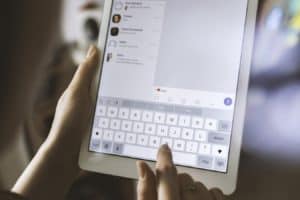Section Navigation
Introduction
The purpose of this module is to introduce students and adults to the concept of citing, and provide them with the proper resources and tools to cite correctly. It also encourages students to look at Indigenous cultural resources with a critical lens and to evaluate where the source is coming from. For example, is the author of an article trying to harm Indigenous peoples? Is their position that of an insider or outsider?
Learning Goals
The goal of this module is for students to learn why citing is important, when to cite and how to cite properly. Another goal is for students to learn how to critically analyze when a source is scholarly or not, and if the author brings any biases or stereotypes to their work.
Vocabulary
Positionality - where you stand on issues based on your personal characteristics and societal or cultural worldview.
APA Style - a writing style and format for academic documents such as scholarly journal articles and books. It describes the style guide of the American Psychological Association.
MLA Style - the style used by the Modern Language Association for preparing scholarly manuscripts and research papers. MLA style uses a works cited page at the end of a paper.
Chicago Manual of Style (CMS or CMOS) - one of the most widely used and published types of citing work in the United States, it is a style guide for all types of papers and has been in use since 1906.
Plagiarism - the practice of taking someone else’s work or ideas and passing them off as your own.
Scholarly Source - peer reviewed journal articles written by scholars or professionals who are experts in their field.
Bias - prejudice in favour of or against one thing, person, or group compared with another, usually in a way that is considered unfair.
Guiding Questions
- Why is it important to cite other people’s work?
- What are some consequences of not properly citing others work?
- How would you feel if someone took credit for something you had done?
Curriculum Links
This module provides an opportunity to address curriculum expectations in English and Computer Studies, as well as addressing issues that could be discussed in Indigenous studies. This lesson is geared to students in Grades 9-12 as well as post-secondary students
Materials
- Computers
- Blank paper and pencils
- Research and Citation Resources – Visit Website
- Back Up Your Thinking document – Download PDF (print off enough copies of this template for each student)
Non-Computer Activity
For this activity divide students into small groups of 2–4 students (depending on class size). On a blank sheet of paper, each student in the group answers one of the following questions, until all questions are answered. In pencil, have students write their name at the top of the page as well as the number of the question they answered.
- What does it mean to plagiarize? (Please provide an example.)
- What are the policies about plagiarism in a school setting? (Use the internet to research some of the policies.)
- What are some of the ways the media portrays inconsistent stories about Indigenous peoples?
- How do you critically evaluate sources?
Once students have answered all four questions, have them pass their papers to students in other groups. Make sure each student has someone else’s paper. Then ask students to erase the name at the top of the page and replace it with their own and hand it in.
Ask students “What did you do when you erased the author’s name and added your own”? Explain that they took credit for someone else’s work, then ask students “Why this is wrong”?
Use this activity to demonstrate how this is plagiarising: the act of taking someone else’s work and passing it off as your own, whether you know that person or not.
Computer Activity
For the online activity, watch the following videos about how to properly cite a source.
- How To Cite Your Sources by Minitex ROI
Then go to the following website and use the online tool to make your own citations.
Choose a topic or theme and make proper citations:
- in APA style for a book,
- in MLA style for a research paper, and
- Chicago style for a video clip.
Have the students present their citations and talk about the differences between citation styles.
Conclusion
To conclude, ask students to pick one of the articles listed below to read. Then have students use the Back Up Your Thinking template to draw an argument from the article based on their own thoughts as well as evidence from the journal. Have students properly cite any quotes they use.
- The Media, Aboriginal People, and Common Sense (PDF)
- Improving The Health Status of Aboriginal People in Canada (PDF)
- Physical Activity of Aboriginal People in Canada (PDF)
Ask students what they learned about citing, and also what tips and tricks they learned about critically evaluating a source.
If time allows, have students discuss in greater depth Indigenous peoples in the news and media, and how it is important to critically analyze every source.
If time allows, watch the following videos:



